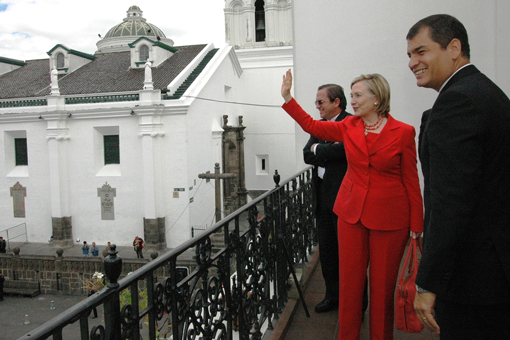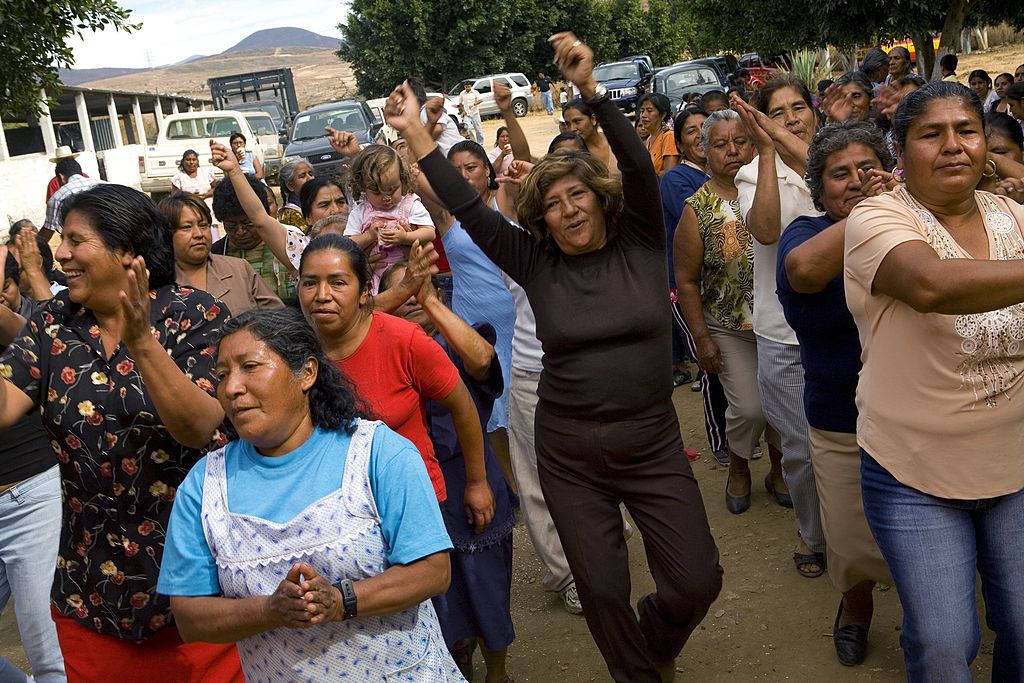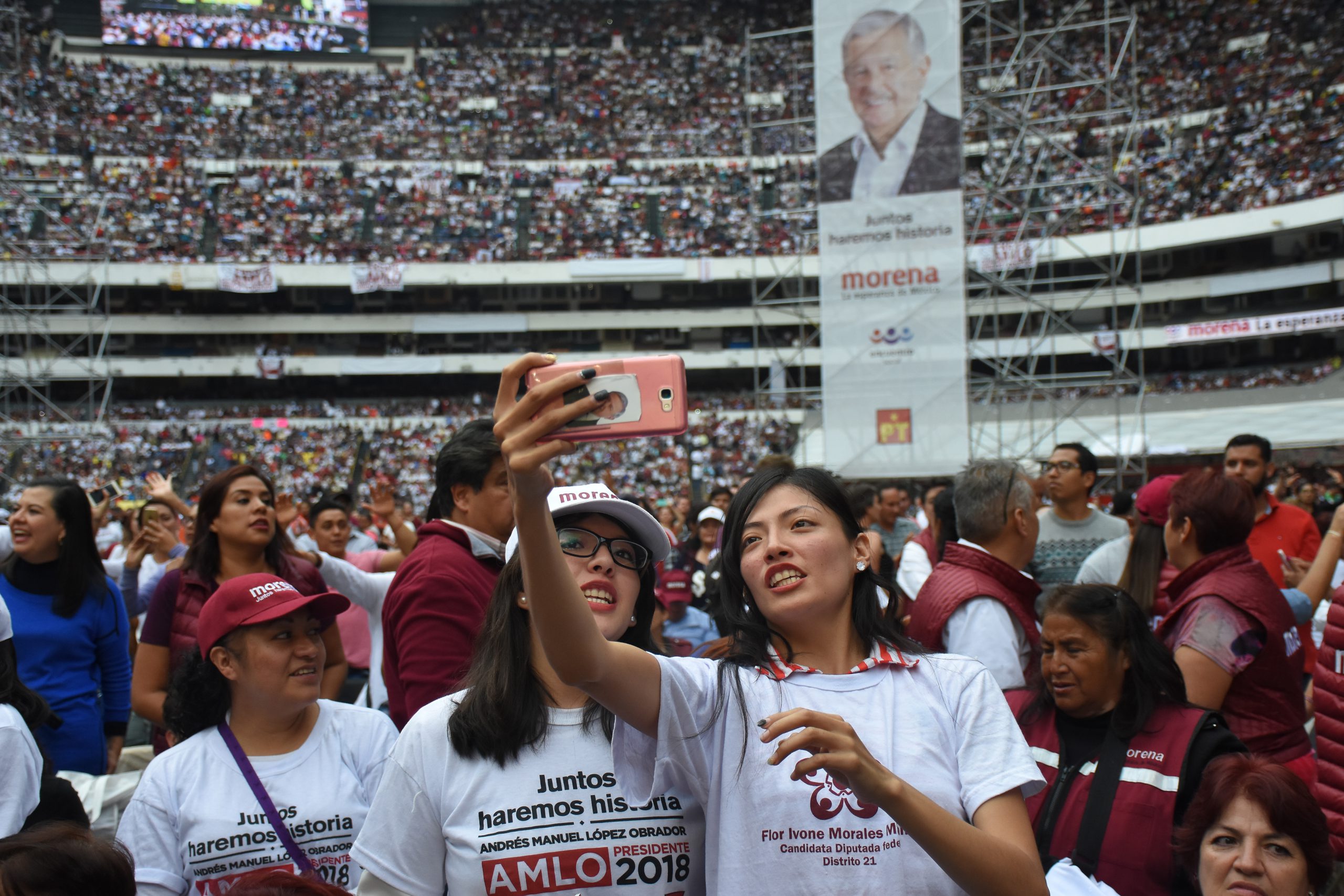Reading Time: 3 minutesHillary Clinton responded to the drumbeat of demands for a major administration policy speech on Latin America this week during her stopover in Quito, Ecuador. The U.S. secretary of state was working her way back home—due to also visit Colombia and Barbados—after attending the annual Organization of American States (OAS) General Assembly in Lima, Peru. Her speech—strategic, specific and at times personal and emotional—did not disappoint.
Clinton mapped out a vision of inter-American relations well grounded in the conceptual convergence between the social democrats that occupy the broad center of Latin American opinion and the worldview of mainstream U.S. Democrats like Clinton herself. The secretary is most effective and genuine when she projects her personal policy preferences—acted upon over a lifetime—toward a hemisphere that is well poised to warmly receive them.
Clinton made triple use of the “opportunity” concept: opportunity for Latin America to build on its progress toward democratic governance and macroeconomic stability and address its deep social deficits; opportunity for the region to knock down barriers blocking social mobility, especially for women; and opportunity for the United States and Latin America to cooperate in tackling common problems.
Compared to the anxieties and manias gripping the United States and Europe, Latin America is suddenly looking pretty sane and smart. And Clinton didn’t hesitate to praise the region for its superior economic performance. She also recognized an impressive list of specific Latin American social innovations that have attracted few headlines but are making a measurable difference in people’s lives. The earlier generation of Latin American macroeconomists—whose much-maligned Washington Consensus reforms laid the foundations for today’s success stories—is now being supplemented with sharp, young technocrats making use of fiscal fine-tuning and micro-incentives to channel resources toward the underprivileged, encouraging the poor to do the right thing: keep their kids in school, access basic health care and become risk-taking micro-entrepreneurs.
Unusual for a U.S. official, Clinton took aim at the Latin American private sector, infamous for its resistance to social change. She had kind words for firms practicing social responsibility, but she blasted the wealthy for failing to pay their share of taxes, for taking a “short-sighted, winner-takes-all approach.” It will be interesting to watch whether she instructs U.S. embassies to advise investors to alter their attitudes and act on her “win-win” vision.
Building on the social inclusion theme, Clinton sought to articulate a broad strategic vision for hemispheric relations in the twenty-first century. In a region largely devoid of traditional security threats, inter-American relations must be based primarily not on fear of a dangerous “other” but rather on some common values and goals. Clinton found these commonalities in social and economic development. Only with widespread economic prosperity is democracy secure. And only with sustainable economic growth and rising labor productivity can the Western Hemisphere find its collective future in the competitive global economy.
The speech was strategic in another sense: by laying out a positive social democratic path toward prosperity, the Obama administration is implicitly responding to the challenge of authoritarian populism and its putative chieftain, Venezuelan president Hugo Chávez. Not to be lightly dismissed, Chávez advances an ideology deeply rooted in Latin America that today poses the main alternative to the Obama-Clinton opportunity vision. By articulating a progressive social agenda, Clinton not only resonates with reigning social democrats in like-minded countries such as Peru, Uruguay and Costa Rica, but she also seeks to draw in populist-leaning, opportunistic leaders, such as Ecuadorian President Rafael Correa, who flirt with Chávez.
But will Clinton’s “opportunity” agenda take hold? Since the Spring 2009 Summit of the Americas in Trinidad and Tobago, Washington has initiated several inter-American forums on energy, social innovations and women’s networks, and has pegged a social inclusion theme onto the Bush administration’s Pathways to Prosperity. The Obama-Clinton institutional strategy—label it flexible functionalism or pragmatic multilateralism—calls for the participation of civil society networks and interested governments (Brazil is welcome if it wishes, Venezuela less so).
Can the administration empower these forums to go beyond small-scale demonstration projects? Can the United States engage the World Bank and Inter-American Development Bank, with their many billions of dollars, to fully back its “opportunity” agenda? Can the administration pull in U.S. and Latin American businesses to engineer the public-private partnerships that will give depth to its vision? Will the administration establish the internal coordinating mechanisms required to accumulate resources and maintain bureaucratic focus?
Most importantly, now that the United States has embraced the development-with-equity agenda that mainstream Latin America has advocated for so long, do the region’s leaders possess the historic courage and political imagination to seize the moment and partner in the three-tier opportunity strategy?
Like what you've read?
Subscribe to AQ for more.
Any opinions expressed in this piece do not necessarily reflect those of Americas Quarterly or its publishers.







